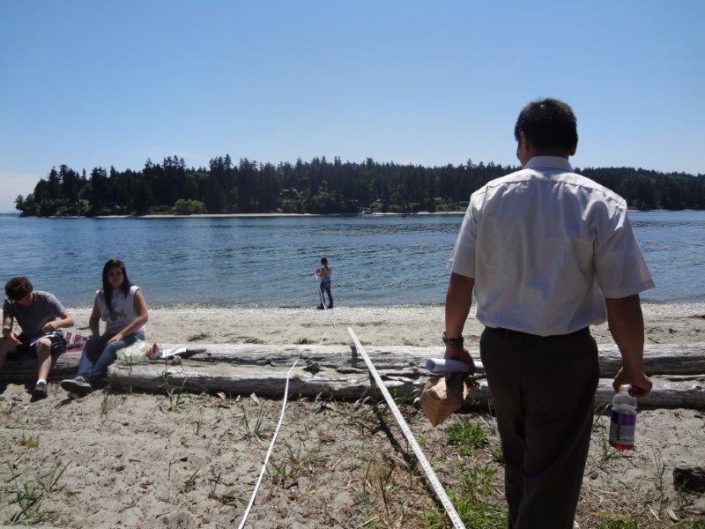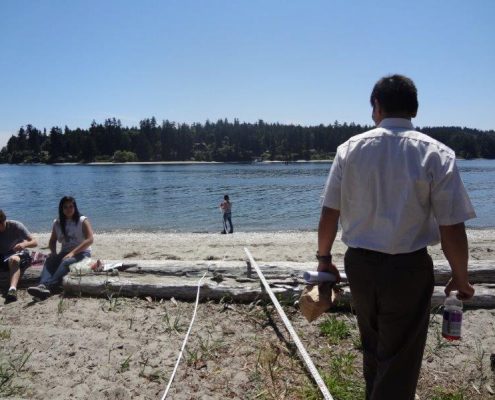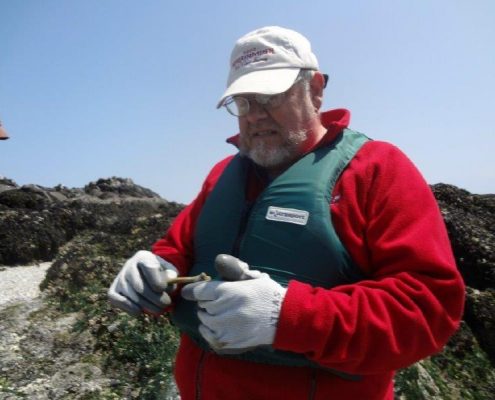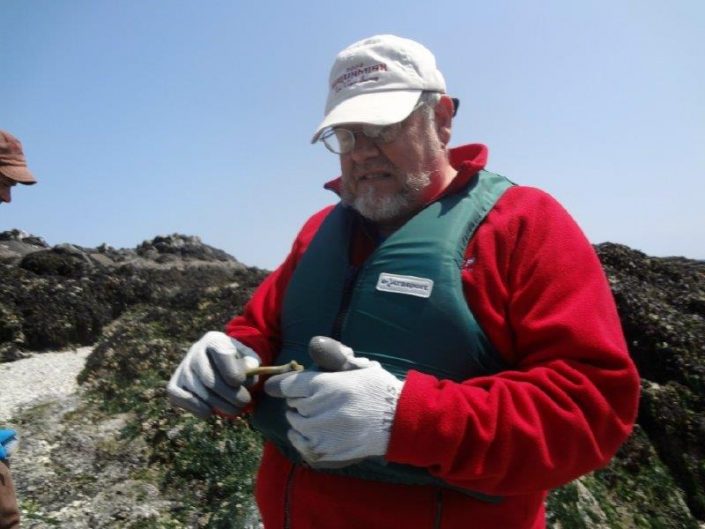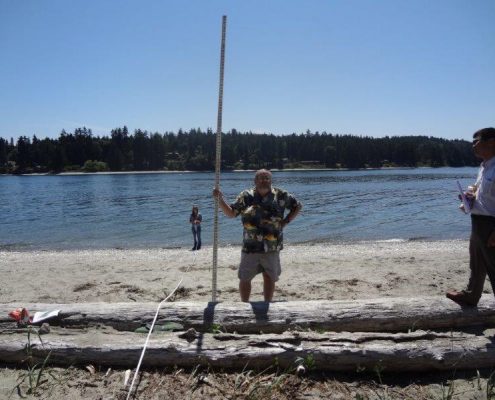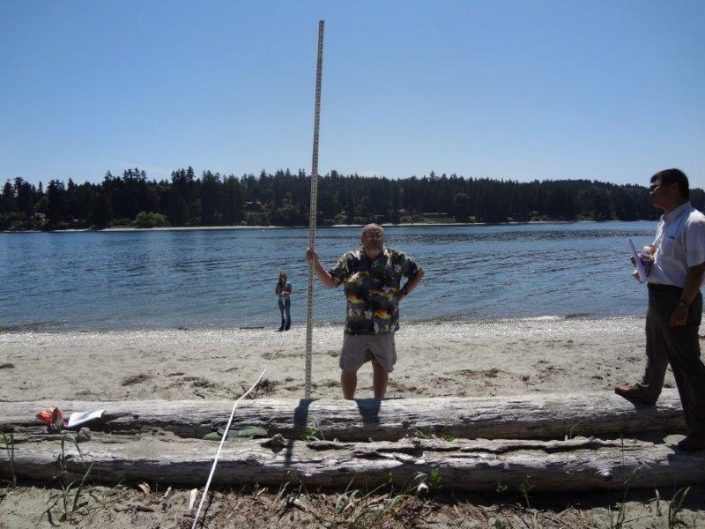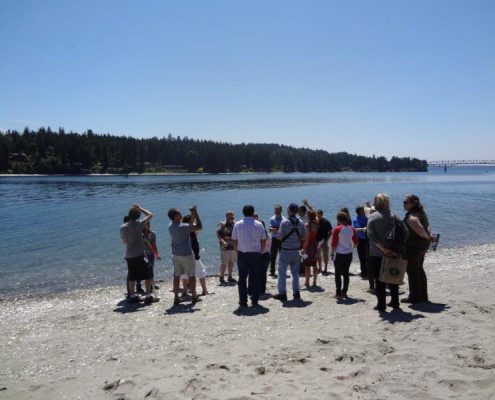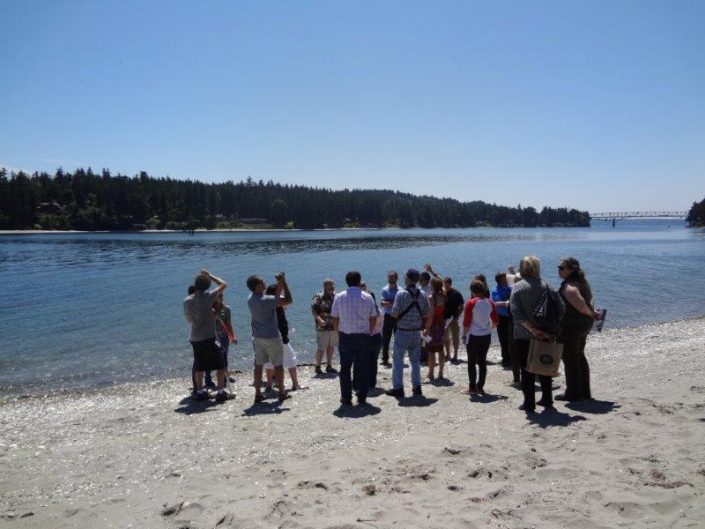Historic Preservation
The Archaeology and Historic Preservation Program of the Fisheries Department is responsible for protecting cultural resources within the Suquamish Tribe’s Usual and Accustomed fishing area (U & A) and the traditional territory of the Suquamish People. The program has a Tribal Historic Preservation Officer and a staff archaeologist to address cultural resources issues. The Archaeology and Historic Preservation staff members are primary contacts for cultural resources management topics within the adjudicated Usual & Accustomed fishing area of the Suquamish Tribe. Archaeology and Historic Preservation Program staff members work with the Suquamish Tribal Council, Tribal members, and Tribal staff to identify, record, and protect traditional cultural places and archaeological resources. Program staff responds to discoveries of Indian human remains throughout the Suquamish U & A and facilitates repatriation of Suquamish ancestors to the Tribe.

An archaeological shell midden on the Port Madison Indian Reservation. Shell middens are a common indicator of village sites.
The Tribal Historic Preservation Officer and Archaeologist review project plans to be sure archaeological and traditional resources are not destroyed during construction within the Suquamish Usual & Accustomed areas.
- Conduct Section 106 consultation with federal agencies
- Conduct SEPA consultation for state, county, and local projects
- Review permits for federal, state, and local projects
- Review and comment on agreements and cultural resources technical reports
- Consult on traditional cultural places information and archaeological probability
- Consult with agencies and other parties when an inadvertent discovery occurs
Background research for proposed project areas and field visits are made when needed. The Preservation Officer reviews federal and state permits for projects throughout Western Washington, in the City of Seattle, and projects in Island, Kitsap, Jefferson, King, Mason, Pierce, and Snohomish counties. The Archaeologist reviews projects in Kitsap County municipalities and unincorporated Kitsap County and Department of Natural Resources Forest Practice permits.

